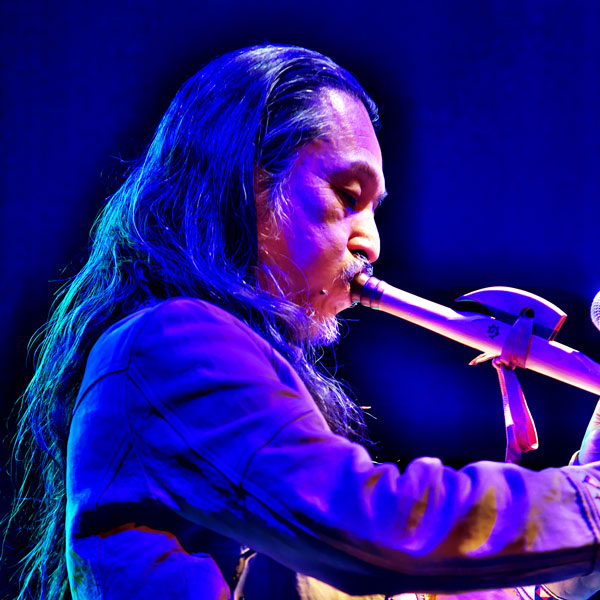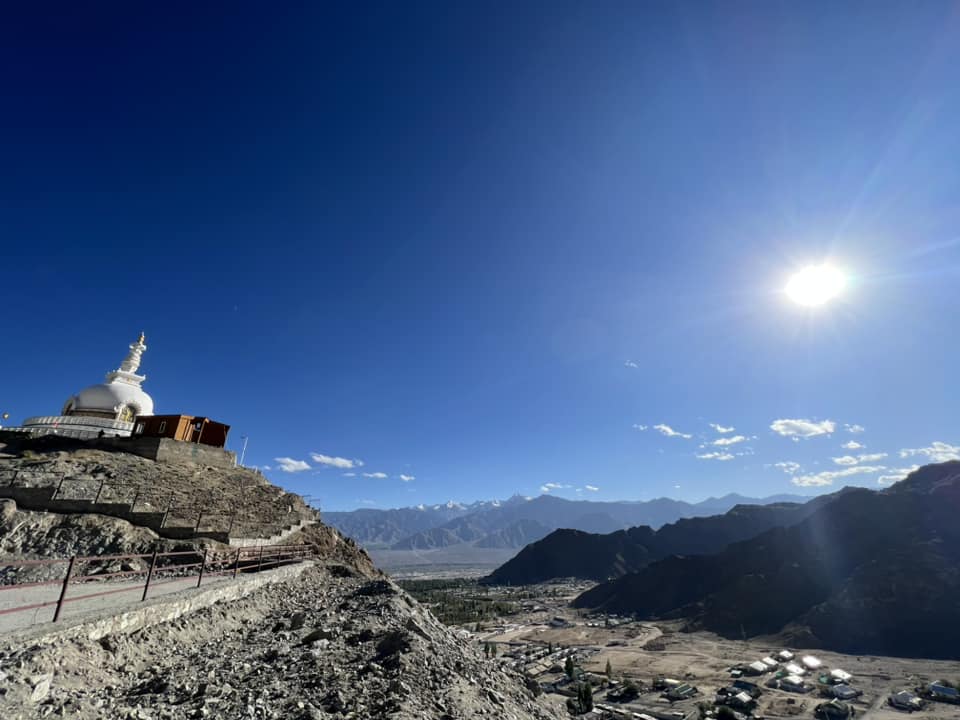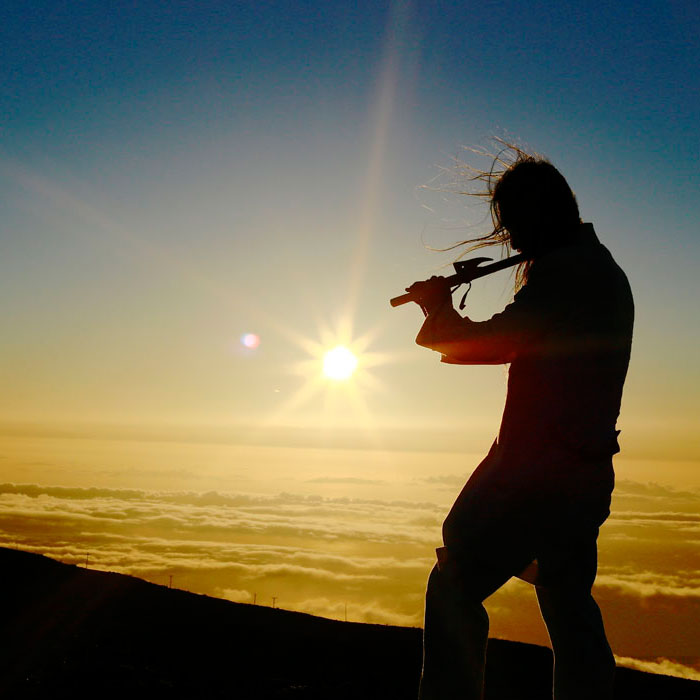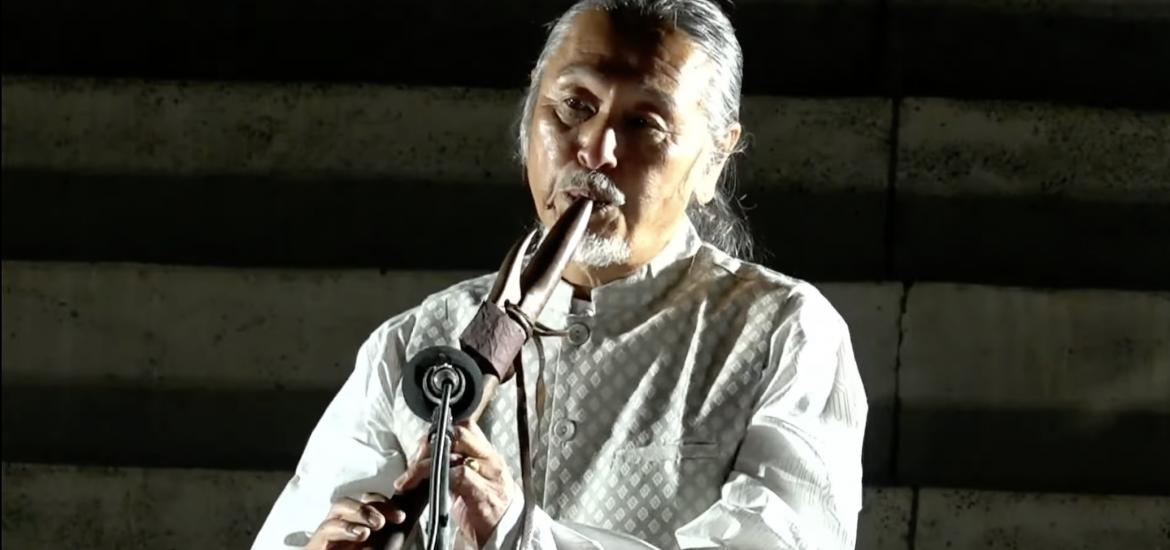The religious landscape of Japan has been sculpted by the devoted hands and illustrious deeds of great Buddhist masters, many of whom adopted practices or imported schools from China and turned them into thriving Japanese institutions of distinctive doctrine and character – think Nichiren (1222–82) and the Tendai school or Shinran (1173–1263) and the Jodo Shinshu.
One of the Buddhist figures of the greatest antiquity and significance is Kukai (774–835). He brought the esoteric tradition known variously as tangmi or zhenyan from Tang China (618–907) to Japan during the Heian period (794–1185). Just as the Tang Dynasty reached heights of greatness and grandeur not seen since China was first unified, the Heian epitomized one of Japan’s most august and exalted periods, with a courtly culture flourishing alongside Buddhism’s stratospheric growth and a flowering of the arts.
The school Kukai founded, the Shingon-shu, is the Japanese rendition of zhenyan (真言宗) because his lineage embodies the unbroken line of transmission received from Amoghavajra to Huiguo, Kukai’s Chinese teacher, and then to him and all his Japanese successors (acharyas) down to the present day. The 1,250th anniversary of his birth falls on 4 November, which will be celebrated at his birth temple Zentsuji Temple with a free collaborative music performance between veteran composer-performers Hiroki Okano and Kitaro.

Hiroki-sensei and Kitaro-sensei are renowned musicians in their respective fields, although they share quite a bit of overlap. Having begun his career in 1987, Hiroki is one of Japan’s veteran New Age composers, utilizing recorded sounds from nature to complement his use of folk instruments from around the world. In June, his album “Tenkawa: Pilgrimage of the Sacred Sound” was the winner of Best Album for January 2023 for One World Music Radio.
Meanwhile, Kitaro’s genres also cover New Age, folk, electronica, and world. During 2003, still in the wake of 9-11 and the American invasion of Iraq, he produced the “Sacred Journey of Ku-Kai” series of peace-themed albums to support global unity (the four volumes in the album series were released in 2003, 2005, 2007, and 2011). The music was inspired by the Shikoku pilgrimage trail, which traces the 88 temples across the island of Shikoku that bear the presence of the esoteric master.
It has been many years since then, but Kitaro’s series holds great resonance with Hiroki, who was himself born and raised on Shikoku Island. “It is a great honour and pleasure to work with the respected world-renowned musician, Kitaro-sensei,” Hiroki said over an email interview with me. “I did not participate in Kitaro’s album from 2003, but I believe that this collaboration will be a new one with some new additions and improvisations.” Hiroki told me that on Shikoku, Kukai is known as Odaishi-sama (お大師様) – “the great master” – and is very close to the island’s residents, especially thanks to his role as a protector of pilgrims and guardian of children. He is prayed to in his temples by women desiring easy and smooth childbirth.
“Kukai was the man who spread esoteric Buddhism in Japan after receiving an invitation to practice Shingon esoteric Buddhism at Seiryuji Temple in China,” emphasized Hiroki. “At the center of the temple is an enshrinement of Dainichi Nyorai (Mahavairocana). I feel that he was trying to convey the fact that there is the way of the Buddha in the truth of the universe.”

The inspiration for Kukai’s anniversary is no doubt the man and monk himself. But inspiration comes easy to Hiroki. “For me, my musical teacher is the natural world itself,” he said, noting that he takes inspiration from every sound of nature: the whisper of the wind, the rollicking beat of thunder, the bubbly rumbling of the deep depths. “The sound of the earth in the heavens is a great learning experience.” In this sense, his deep connection to the music of the planet itself goes far beyond any historical figure, well into deep time.
Hiroki-sensei travels the world, performing at natural and sacred locales where spiritual portals are particularly potent. While in Ladakh in late September, our contributing writer, artist-mystic Rebecca Wong, went to watch his performance at the Shanti Stupa. His sounds are ethereal and delicate but also lively and charismatic thanks to his mastery of the flute. In Japan, the shakuhachi is a woodwind that has a long historical association with the Fuke Zen school, and is used as a form of meditation and spiritual practice. As a flutist, he has engaged in a “musical” form of interfaith dialogue, such as playing a Native American flute alongside Adrian Freedman (who is a master of the shakuhachi) in 2019.
He will be headed to Egypt later on, where he is to perform at the Great Pyramids of Giza – one of the greatest spiritual portals of humankind.
Earlier in March 2023, the unsurpassed Ryuichi Sakamoto passed away, leaving behind an estimable legacy as one of Japan’s most successful musician-composers (even those that are only vaguely acquainted with Japanese music will know about 1983’s “Merry Christmas, Mr. Lawrence”). He was not only synonymous with pioneering entire subgenres within electronic music, but also was from the outset trained in ethnic and world music, from Okinawa to Africa and India. His music embodied a deep universality, just like Hiroki’s and Kitaro’s. If we look at the creative arcs of Sakamoto and Kitaro as one that increasingly bends toward the spiritual, it could be said that Hiroki-sensei completes this arc, with his New Age and ambient work being explicitly geared toward channelling the positive energies of each sacred site he performs at and opening the portals of cosmic love, which I interpret as unimpeded compassion for all beings across the universe.
“I believe that the realisation of cosmic love in the future of the human race of the Earth is necessary for all people living on this planet,” he said. “Very often, I feel as if Odaishi-sama is gently patting me on the back and telling me that it is okay to be troubled and suffer at times at milestones in my life.”

Hiroki’s reflections lead me to believe that those with a particularly strong connection to Kukai, such as the local people of Shikoku, feel the presence of this esoteric master as a force of compassion, love, and kind-heartedness in their daily lives. After all, local legend says that he has not really passed away, but is in deep samadhi. Hiroki’s shakuhachi draws forth the melodies of Odaishi-sama’s enlightenment into our world, beckoning us to transform the planet and ourselves.
See more
Hiroki Okano discography (Domo Music Group)
Related blog posts from BDG
Veteran Japanese Musicians Hiroki Okano and Kitaro Team Up for Kukai’s 1250th Anniversary


